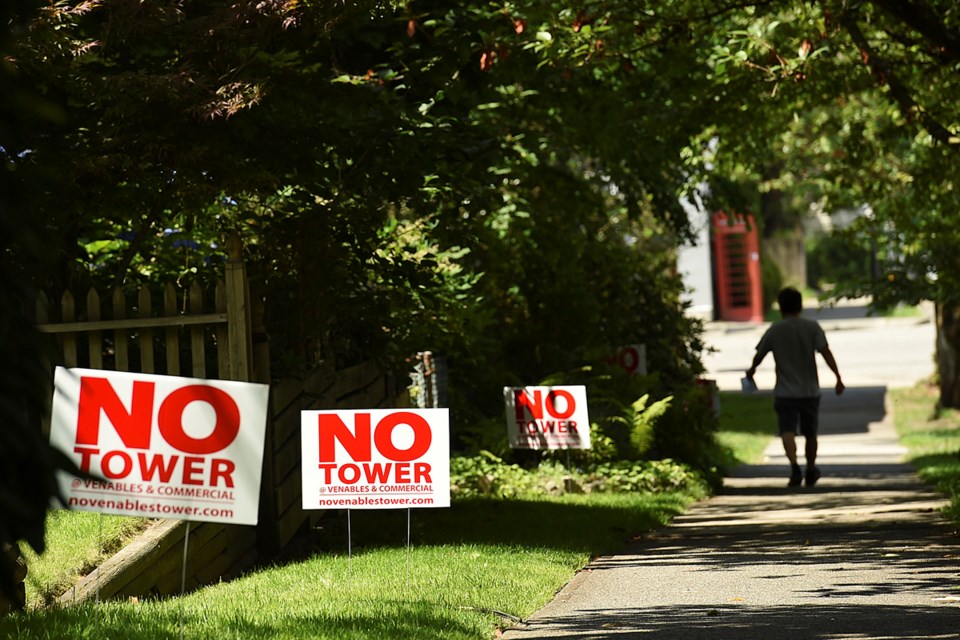There is criticism from developers, planners and the media of citizens who raise concerns about development and are then labeled as "NIMBYs." Accusations of NIMBYism distort the issues and divert attention away from the need for a rational dialogue about our problems and potential solutions that address the needs of residents and local businesses.
For instance, at the recent Urban Development Institute annual meeting, condo marketer and industry spokesperson Bob Rennie said that anyone with a "No Tower" sign has no right to talk to their children about affordability.
However, the “NIMBYs” he referred to in Grandview-Woodland opposed to the Boffo/Kettle project have put out several alternative proposals to a tower. One of their very workable proposals involves the low-cost lease of public land at the site adjacent to the Kettle, allowing social housing in the neighbourhood to expand without threatening other low-income residents. The city has not responded to these options.
One might suggest that self-interested development industry promoters have no right to talk about affordability when their endless demands for rezoning have inflated land values and rents, resulted in the loss of affordable older housing stock and created a housing bubble.
Some would say this is a city run by developers, for developers and that political parties and the media rely on them for funding and advertising. The Coalition of Vancouver Neighbourhoods (CVN), a non-partisan group of more than 25 allied neighbourhood associations from all parts of the city, takes a more pragmatic view.
CVN promotes a meaningful dialogue among planners, developers and neighbourhoods in order to build a democratic process of decision-making. Rather than slinging pejorative acronyms, it is more constructive for the people of Vancouver to engage in an open and honest discussion about development, affordability and other critical issues.
It is important to resist persistent efforts to distract from what is actually causing the affordability crisis, for instance by pitting Vancouverites against each other. This first played out when people called attention to the large amount of unregulated foreign investment in Vancouver’s housing market and our local government and development interests responded with charges of racism. This ploy was rejected since everyone knows the issue is about huge amounts of capital, not race.
The latest is the attempt to pit citizens against each other on the basis of age. So rather than talking about how to rein in an unregulated real-estate market, the problem is framed as a conflict between grey-haired owners of coveted single-family homes vs. millennials priced out of the market.
Another diversionary device is for governments to do nothing to solve the affordability crisis while making token, PR-driven gestures. An example is the city’s Affordable Home Ownership program that upzones all arterials in residential neighbourhoods for condos and townhouse developments.
Despite its “affordable” title, this initiative mostly benefits developers and the well-off, not the targeted demographics of moderate income earners or those who need help the most. Older houses with rental suites can offer some of the lowest-cost rentals in the city. Under the Affordable Home Ownership scheme, large swaths of these currently affordable homes would be bulldozed to build more expensive dwellings.
The real causes of Vancouver’s affordability crisis are being ignored. Yet the facts remain: our housing marketplace is insufficiently regulated and current regulations are inadequately enforced.
Developers and our city government claim that the solution is to increase development supply. Yet the facts prove otherwise. Studies have shown that skyrocketing housing prices are the result of foreign investment and, though the city could also use its existing powers to solve the problem, it prefers to only demand that federal and provincial governments take action.
The city has actually been approving new dwellings at twice the rate needed for population growth by the city's own estimates, prices continue to soar at an increasing rate. Increasing supply seems to be fuelling the problem, not solving it. Upzoning causes land price inflation that is driving unaffordability
Unfortunately, provincial and federal governments seem to be also listening to development industry lobbyists promoting an increase in housing supply rather than addressing the real issues of foreign investment and an unregulated market.
The public needs meaningful opportunities to provide input into plans to solve the affordability crisis, rather than top-down plans developed without adequate public involvement that don't address the real problems.
Marion Jamieson is a former provincial planner and represents Upper Kitsilano Residents Association (UKRA) on the Coalition of Vancouver Neighbourhoods (CVN). Dorothy Barkley is the chair of Grandview Woodland Area Council (GWAC) and former co-chair of CVN.



